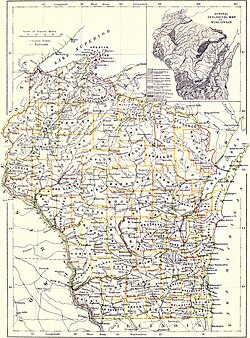
Wisconsin’s demographic landscape has been shaped by successive waves of migration dating back to pre-European contact. Long before settlers arrived, numerous Indigenous nations maintained dynamic and far-reaching trade and communication networks throughout the region. French voyageurs and fur traders established early European footholds in the 17th century, followed by British and then American expansion that opened new pathways for agriculture, mining, and industrial opportunities.
From the influx of Cornish miners drawn by southwestern Wisconsin’s prolific lead deposits to the large-scale arrival of German, Norwegian, and Polish immigrants seeking farmland, the state became a nexus for diverse communities and cultural traditions. Political upheavals, economic shifts, and expanding industrial sectors likewise propelled further relocations. Later, African Americans during the Great Migration and Hmong refugees resettling after the Vietnam War added new dimensions to Wisconsin’s social fabric. These historical routes and motivations highlight the complexity and depth of the state’s cultural and economic evolution.
| Time Period | Ethnic Group | Origination Location | Arrival Location | Motivating Factors |
|---|---|---|---|---|
| Pre-European contact (prior to 17th century) | Various Indigenous Nations (e.g. Menominee, Ho-Chunk, Ojibwe, Potawatomi) | Ancient migration routes from the East or from other Great Lakes regions | Present-day Wisconsin region | Seasonal hunting, gathering, fertile land, territorial shifts |
| 17th century – early 18th century | French Explorers and Fur Traders | France, via St. Lawrence River and Great Lakes routes | Early trading posts in Green Bay, Prairie du Chien, and along major rivers | Fur trade opportunities, expansion of French colonial influence |
| Mid-18th century | British Traders and Settlers | Great Britain, Eastern British Colonies | Former French trading centers (e.g., Green Bay, Milwaukee) after British control in 1763 | Desire to control lucrative fur trade, expansion of British colonial territory |
| Early 19th century | Yankee (New England) Settlers | New England states (primarily Connecticut, Vermont, Massachusetts) | Southern and eastern Wisconsin (e.g. Milwaukee, Madison area) | Cheap land, agricultural opportunities, westward expansion post-Revolution |
| 1820s – 1840s | Cornish Miners and Other Lead Miners | Cornwall (England), Missouri, and other U.S. lead mining regions | Southwestern Wisconsin (Galena–Dubuque lead region) | Abundant lead deposits (the “Lead Rush”), mining jobs, economic opportunity |
| 1840s – 1890s | German Immigrants | German states (Prussia, Bavaria, Saxony, etc.) | Milwaukee, Dodge, Washington, Sheboygan, and other counties | Political unrest in German states (1848 revolutions), farmland availability, chain migration |
| 1840s – 1910s | Norwegian Immigrants | Norway | Central and western Wisconsin (e.g. Trempealeau, Vernon, Dane counties) | Poverty and limited farmland in Norway, Homestead Act, strong immigrant networks |
| 1850s – 1920s | Polish Immigrants | Partitioned Polish territories (Russian, German, and Austro-Hungarian Empires) | Milwaukee, Stevens Point, Portage County, Polonia | Escape from political oppression, seeking industrial and agricultural work |
| 1850s – early 20th century | Irish Immigrants | Ireland (especially post-Great Famine) | Milwaukee, Janesville, and various rural communities | Famine, poverty, search for economic opportunities, canal and railroad construction work |
| Late 19th – early 20th century | Czech (Bohemian) and Other Slavic Groups | Bohemia (Austria-Hungary), other Slavic regions | Rural areas of eastern and central Wisconsin | Industrial and agricultural employment, escape from political strife, chain migration |
| 1910s – 1970s (Great Migration) | African American Migrants | Southern U.S. states (Mississippi, Arkansas, Alabama) | Milwaukee and other urban centers | Industrial jobs in factories, escape from Jim Crow laws and racial violence |
| 1970s – 1990s | Hmong Refugees[1] | Laos, Vietnam, Cambodia (post-Vietnam War) | Primarily Milwaukee, Wausau, and Green Bay | Refugee resettlement programs, sponsorship by faith-based and community organizations |
| 1990s – Present | Latin American (especially Mexican) Immigrants | Mexico and Central American countries | Both urban (Milwaukee, Madison) and rural communities (dairy and agricultural regions) | Agricultural and service-sector jobs, family reunification, broader migration trends |

